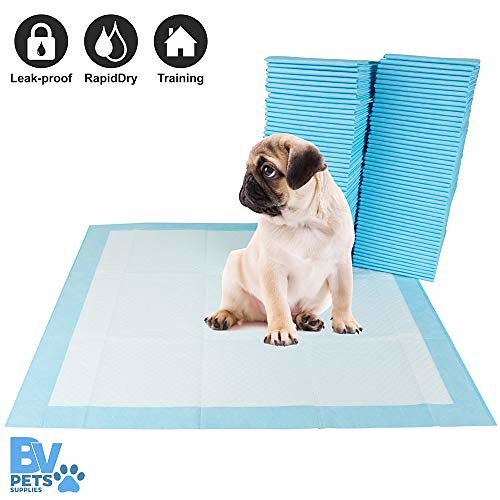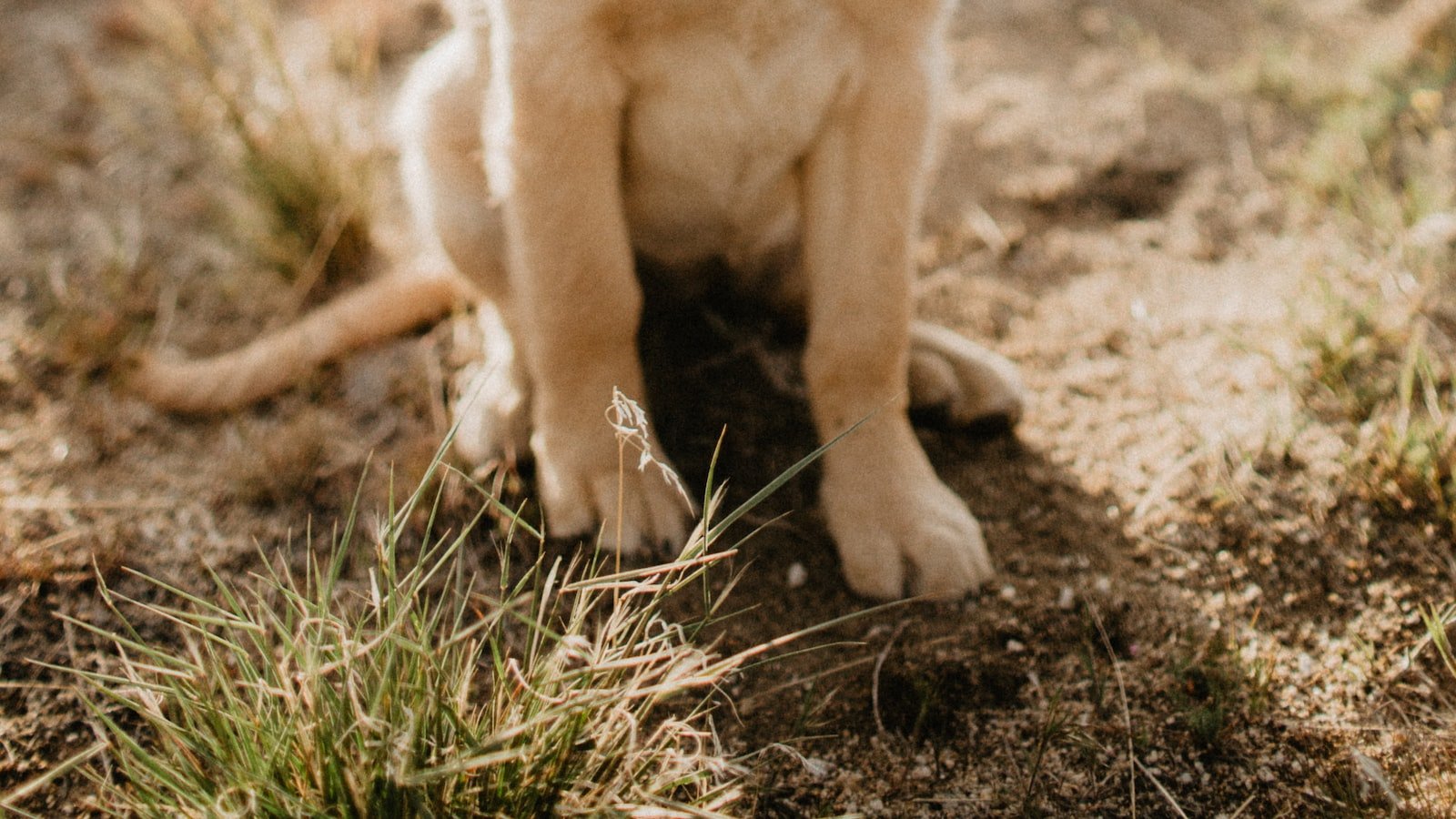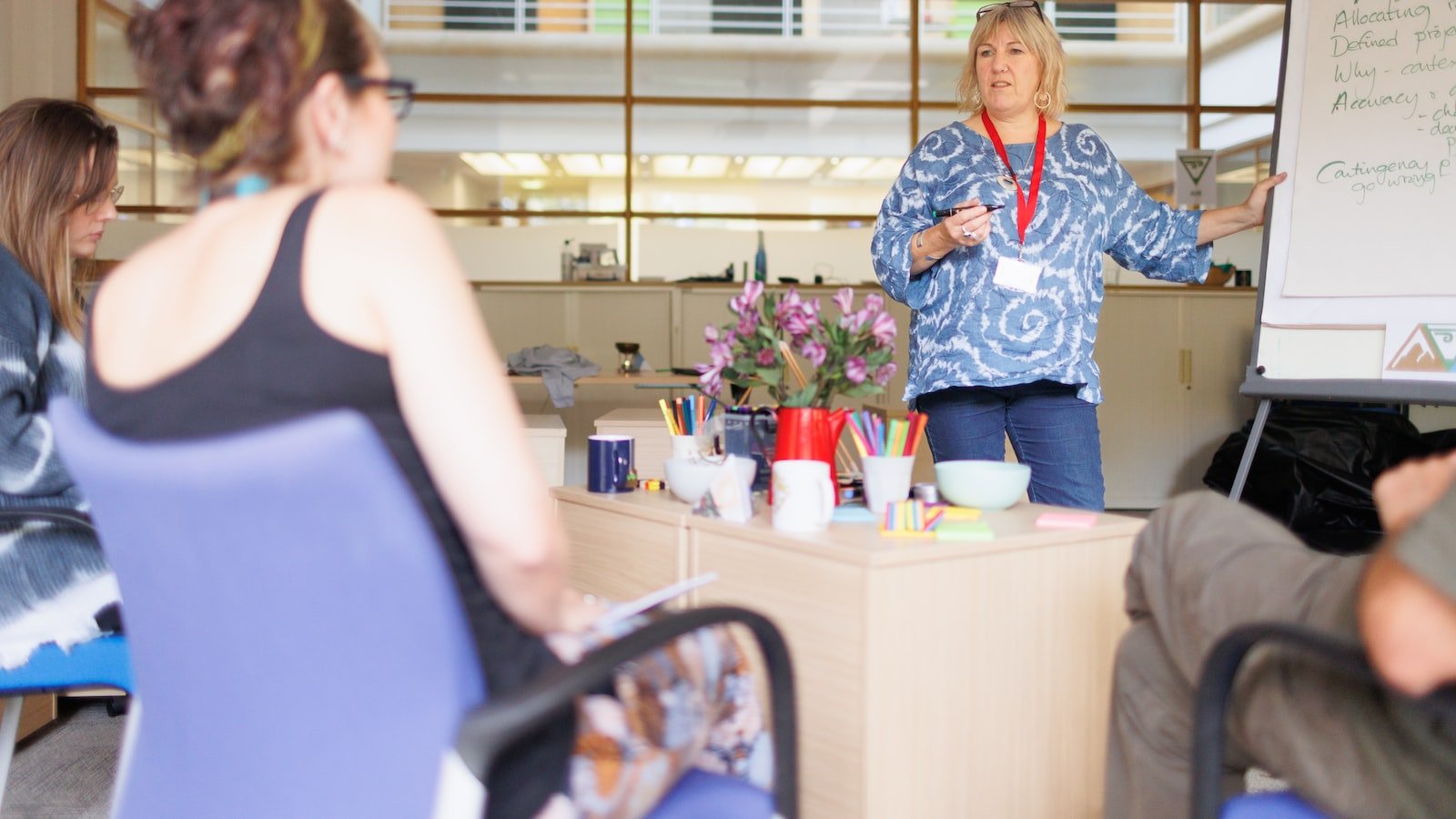Finding a playful puppy to join your family is undoubtedly an enchanting experience. The warm lick of a wet nose, the wagging tail that never ceases, and those adorable puppy eyes that could melt even the toughest of hearts – it’s an irresistible cocktail of cuteness. However, as thrilling as it may be, embarking on the journey of puppy ownership also comes with its fair share of challenges. And perhaps one of the most crucial hurdles to overcome is mastering the art of potty training. Fear not, for this ultimate guide to puppy potty training is here to help you navigate through the maze of accidents and chewed-up slippers, and pave the way towards a harmonious life with your furry bundle of joy.
Table of Contents
- Introduction: Setting the Stage for Successful Puppy Potty Training
- 1. Understanding Your Puppy’s Toilet Needs: Unveiling the Basics
- 2. Essential Tools and Supplies for Effective Puppy Potty Training
- 3. Constructing a Foolproof Potty Training Schedule for Your Puppy
- 4. Insider Tips for Consistency and Positive Reinforcement during Potty Training
- 5. Overcoming Common Challenges: Troubleshooting Accidents and Regression.
- Q&A
- Final Thoughts

Introduction: Setting the Stage for Successful Puppy Potty Training
Welcoming a new puppy into your home is an exciting and joyous moment. However, along with all the cuteness and playfulness comes the responsibility of potty training. A well-trained puppy not only ensures a happy and clean living environment but also strengthens the bond between you and your furry friend.
In this section, we will discuss the essential factors that lay the foundation for a successful puppy potty training journey. From understanding your pup’s biological needs to creating a consistent routine, we will explore the key elements that contribute to effective training.
Preparing yourself mentally and emotionally for the task ahead is crucial, as patience and consistency are vital when teaching your puppy where to do their business. Remember, every pup is unique, and their learning pace may differ. However, armed with the right knowledge, tools, and a positive mindset, you can pave the way for a smooth and successful potty training experience for your furry companion.
- Understanding your puppy’s needs: Before diving into the training process, it’s essential to understand your puppy’s physiological and psychological requirements. Recognizing their bladder control capabilities, common potty signals, and their preferred bathroom areas will significantly aid in the training process.
- Establishing a consistent routine: Puppies thrive on routine, so creating a well-structured schedule for feeding, playtime, and potty breaks is of utmost importance. Consistency in timing will help your pup recognize when they need to relieve themselves, making it easier to guide them to the appropriate spot.
- Creating a designated potty area: Designating a specific spot outside or utilizing indoor pee pads will assist in teaching your puppy the appropriate place to eliminate. Reinforcing this designated area with consistent cues or scents can help fast-track their understanding.
Setting the stage for successful puppy potty training requires a combination of knowledge, dedication, and love. By following the guidance in this section, you’ll be well on your way to effectively potty training your precious pup and establishing a harmonious environment for both of you.

1. Understanding Your Puppy’s Toilet Needs: Unveiling the Basics
When bringing a new fluffy friend into your home, one of the most essential aspects to tackle is understanding their toilet needs. Puppies, just like human babies, require guidance and a structured routine to develop proper toilet habits. To set your puppy on the right path, consider the following tips:
- Patience is Key: Remember, puppies are still learning and accidents are inevitable. Be patient and avoid scolding your puppy for accidents. Instead, focus on rewarding them when they successfully use the designated elimination area. Positive reinforcement goes a long way in their learning process.
- Create a Designated Area: Establishing a specific spot for your puppy’s toilet needs encourages consistency and makes the training process easier. Choose an area outside that is easily accessible and away from high-traffic areas. Use scent markers or dog litter to guide your puppy towards the designated spot.
- Establish Routine: Puppies thrive on routine, so it’s crucial to establish a regular schedule for feeding and toilet breaks. Take your puppy to the designated area at consistent intervals throughout the day, including after meals and naps. Gradually increase the time between breaks as they grow older and develop better bladder control.
By understanding your puppy’s toilet needs and providing them with a nurturing and structured approach, you’ll be well on your way to a potty-trained and happy companion.

2. Essential Tools and Supplies for Effective Puppy Potty Training
Effective puppy potty training requires the right tools and supplies to make the process smoother and more efficient. Here is a comprehensive list of essentials that every pet owner should consider:
1. Puppy Pads or Newspapers: These are perfect for training your little furry friend to use a designated spot indoors. Place them strategically in areas where accidents are more likely to occur.
2. Treats: Positive reinforcement is key during potty training. Use tasty treats to reward your puppy every time they successfully use their designated potty area, reinforcing good behavior and motivating them to keep it up.
3. Collar and Leash: Essential for taking your pup outside for potty breaks. Make sure the collar is snug but not too tight, and the leash is sturdy enough for quick and controlled walks.
4. Enzymatic Cleaner: Accidents happen, but it’s crucial to eliminate smells that can attract your puppy back to the same spot. An enzymatic cleaner breaks down odor-causing substances, helping eliminate any residual scents.
5. Crate or Playpen: These provide a safe space for your pup when unsupervised, and can also aid in potty training. Dogs naturally avoid soiling their sleeping area, making a crate or playpen an effective tool in establishing a routine.
Remember, consistency and patience are key when potty training your puppy. By utilizing these essential tools and supplies, you’ll be well on your way to creating a happy and accident-free household for both you and your furry friend.
3. Constructing a Foolproof Potty Training Schedule for Your Puppy
Potty training is an essential aspect of raising a puppy, and having a well-structured schedule can make the process smoother for both you and your furry little friend. Here are some key steps to consider when constructing a foolproof potty training schedule:
- Consistency is key: Establish a consistent routine for your puppy to follow. Take them outside to the designated potty area at the same times each day, such as after waking up, after meals, and before bedtime. This will help them understand when and where they should eliminate.
- Set time frames: Assign specific time frames for your puppy’s bathroom breaks. For example, take them out every two to three hours initially and gradually increase the time as they become more comfortable and better at holding their bladder.
- Positive reinforcement: Reward your pup with treats and praise immediately after they eliminate in the designated area. This will reinforce the desired behavior and motivate them to continue using the proper spot.
- Watch for signs: Keep an eye out for signs that your puppy needs to go, such as sniffing or circling. Promptly interrupt any accidents indoors and redirect them to the appropriate outdoor spot.
Remember, potty training requires patience and consistency. Be prepared for occasional setbacks and accidents, as it is a normal part of the learning process. By following a well-constructed schedule and using positive reinforcement, you will be well on your way to successfully potty training your precious pup!
4. Insider Tips for Consistency and Positive Reinforcement during Potty Training
When it comes to potty training, consistency is key! Here are some insider tips to help you on your journey towards success:
1. Establish a Routine: Creating a consistent potty training routine is essential. Set designated times throughout the day for your child to use the potty. This not only helps them develop a sense of timing, but also instills a sense of structure and predictability.
2. Celebrate the Victories: Potty training can be a challenging process, so it’s important to celebrate every small success along the way. Whether it’s your little one successfully using the potty or even just attempting to do so, give them praise, applause, or a small reward. Positive reinforcement goes a long way in motivating your child to continue their potty training journey.
3. Be Patient and Encouraging: Remember, accidents are bound to happen! Maintaining a calm and supportive attitude is crucial during these times. Avoid scolding or punishing your child for accidents, as this may create anxiety and hinder their progress. Instead, offer comfort and encouragement, reminding them that accidents are a normal part of the learning process.
4. Provide Easy Access: Make sure the potty chair or seat is easily accessible for your child. Have it placed in a designated area that is easily reachable throughout the day. This accessibility will encourage independence and make it more convenient for your child to use the potty whenever the need arises.
5. Use Visual Aids: Visual aids can be a valuable tool in potty training. Consider using colorful charts or stickers to track your child’s progress. Each time they successfully use the potty, allow them to add a sticker or mark their accomplishment on the chart. This not only adds a fun element to the process but also helps your child visualize their achievements and stay motivated.
By following these insider tips, you can create a consistent and positive potty training experience for your little one. Remember, every child is different, so be patient, stay positive, and adapt these tips to suit your child’s needs and personality.
5. Overcoming Common Challenges: Troubleshooting Accidents and Regression
Common Challenges in Troubleshooting Accidents and Regression
Accidents and regression are common challenges that can occur in any situation, whether it be personal, professional, or even within a specific skillset. Overcoming these challenges requires a systematic approach and a willingness to address the underlying causes. Here are some strategies to help you navigate these obstacles:
- Identify the Root Cause: When faced with an accident or regression, the first step is to identify what caused it. This could be a mistake in the process, a lack of attention to detail, or even external factors that contributed to the setback. Understanding the root cause will allow you to better troubleshoot the issue and prevent it from happening again in the future.
- Implement Corrective Measures: Once the root cause has been identified, it’s important to take corrective measures to address the issue. This could involve revising protocols, enhancing training programs, or providing additional resources to prevent further accidents or regression. It’s crucial to be proactive in finding solutions to avoid repeating past mistakes.
- Monitor Progress: Troubleshooting accidents and regression requires continuous monitoring and evaluation. This can be done through regular check-ins, performance reviews, or data analysis. By monitoring progress, you can identify any potential signs of regression early on and take necessary steps to address them promptly.
Troubleshooting accidents and regression can be challenging, but with a proactive mindset and the right strategies, you can overcome these obstacles and ensure sustained growth and improvement.
Q&A
Q: How long does it typically take to potty train a puppy?
A: The duration of potty training can vary depending on the puppy’s breed, age, and individual temperament. On average, it takes about 4 to 6 months, but consistency and positive reinforcement are key to achieving success.
Q: Is it possible to completely avoid accidents during the potty training process?
A: While accidents can happen during the training period, with proper guidance and supervision, you can greatly minimize them. Remember, puppies have small bladders, so frequent trips outside and quick identification of their potty cues will expedite the process.
Q: How can I establish a potty training routine for my puppy?
A: Establishing a routine involves taking your puppy outside at regular intervals, especially after meal times, play sessions, and waking up from naps. Be patient and consistent while using encouraging words or phrases to help them associate toileting with outdoor spaces.
Q: What should I do when my puppy has an accident indoors?
A: Any accidents should be calmly cleaned up using appropriate odor-neutralizing cleaners to eliminate any trace of the accident. Avoid punishment, as it can confuse your puppy and hinder the potty training process.
Q: How can I reinforce positive behavior during potty training?
A: Positive reinforcement is crucial in puppy potty training. Reward your puppy with treats, praise, or playtime immediately after they eliminate in the designated spot to create a positive association.
Q: Is crate training an effective method for potty training?
A: Crate training can be a useful tool in potty training as it teaches puppies to control their bladder and bowel movements. However, it’s important to ensure that the crate is appropriately sized, comfortable, and never used as a form of punishment.
Q: Should I punish my puppy for accidents if they occur?
A: No, punishment should never be used during potty training. Punishing your puppy for accidents may instill fear or anxiety, hindering their progress. Instead, focus on positive reinforcement and redirecting their behavior to the designated potty area.
Q: How can I prevent my puppy from having accidents during the night?
A: Limit your puppy’s access to water a few hours before bedtime and take them out right before going to sleep. Setting a consistent sleep schedule assists in minimizing nighttime accidents. Gradually increase the time your puppy sleeps through the night as their bladder capacity improves.
Q: What should I do if my puppy refuses to eliminate outside?
A: If your puppy is having difficulty eliminating outside, try increasing the frequency of potty breaks. Additionally, observe their behavior and timing to identify any patterns or cues. Patience, consistency, and positive reinforcement will help overcome this hurdle.
Final Thoughts
And there you have it, the comprehensive guide to puppy potty training. We have covered everything from understanding your furry friend’s natural instincts to implementing effective training techniques that will have them relieving themselves in all the right places.
Remember, patience and consistency are key when it comes to this fundamental aspect of raising a well-behaved pup. Celebrate every small victory, as each successful trip to the designated potty area brings you closer to a harmonious coexistence with your four-legged companion.
As you embark on this journey with your new furry bundle of joy, do not fret about the occasional accident or setback. Remember, Rome wasn’t built in a day, and neither is a perfectly potty-trained puppy. Be gentle with yourself and your pup, for this is a learning experience for both of you.
With the knowledge you have acquired from this ultimate guide, paired with love, understanding, and a good dose of perseverance, you are well-equipped to tackle this important aspect of puppy training head-on.
In time, you will find that the once daunting task of potty training will become a mere stepping stone towards a lifetime of joyful companionship with your pup. So, take a deep breath, pick up that leash, and start the journey towards a cleaner and happier home.
May your floors remain spotless, and your bond with your furry friend grow ever stronger.
As an affiliate, my content may feature links to products I personally use and recommend. By taking action, like subscribing or making a purchase, you’ll be supporting my work and fueling my taco cravings at the same time. Win-win, right?
Want to read more? Check out our Affiliate Disclosure page.